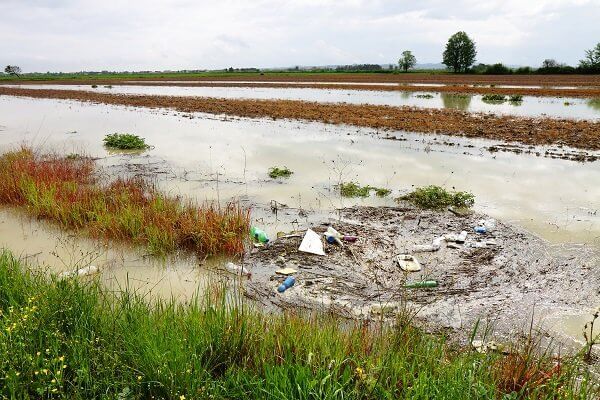Tarrant Regional Water District v. Gragg is one of the most significant inverse condemnation cases in Texas. Glenn Sodd, Clay Beard, Jason Sodd and Jody McSpadden represented the landowners in the Gragg case at trial and through the appeals to the Supreme Court of Texas. We recently explored inverse condemnation claims in a different blog post, and here we are digging deeper into the inverse condemnation, the takings clause, and significant court rulings in inverse condemnation claims since Gragg.
This blog explores in more depth the ruling in Gragg, as well as explaining the law that the ruling is based on.

Tarrant Regional Water District v. Gragg
In the 2004 Gragg case, landowners and lessees of ranch land brought an inverse condemnation claim against a regional water district to recover compensation for flooding caused by construction and operation of a reservoir and dam.
Although the land was already subject to flooding, the reservoir changed the nature of that flooding. The water arrived sooner, flowed faster, and was more forceful, deeper, and longer lasting.
The original trial, appeal and eventually the Supreme Court of Texas ruled that the land was permanently taken because the reservoir caused recurrent destructive changes in flooding that directly impacted the ranch land, making no longer usable for its intended purpose.
What does “permanently taken” mean? Essentially, it means that the Tarrant Regional Water District “took” the ranchland away from the owners by making it unusable for ranching. This phrase stems from what’s known as the “takings” clause in the Texas Constitution.
The Takings Clause
Article I, Section 17, of the Texas Constitution describes the “takings” clause. It states that “[n]o person’s property shall be taken, damaged or destroyed for or applied to public use without adequate compensation being made, unless by the consent of such person.”
As the court observed in Gragg, at the heart of the takings clause is the idea that the government should not force some people to bear public burdens on their own when, in all fairness and justice, the burdens should be borne by the public as a whole.
A taking under this provision can be physical or regulatory. A physical taking occurs when the government physically appropriates or invades private property or, as in the case of the Gragg ranchland, interferes with the landowner’s right to use and enjoy the land.
In Gragg, the owner of the ranch land was awarded over $10 million, and the water district effectively acquired a flooding or inundation easement as a result of the case.
When the government forces you to sell your property for a public use, this is known as condemnation, and it is allowed under state and federal eminent domain laws. However, when the government takes private property without first paying for it, the owner may recover damages for inverse condemnation. But mere negligence that eventually contributes to property damage does not amount to a taking.
Answers to Your Eminent Domain Questions
This is a tricky question, but if it can be proved that the oil and gas flowing through a pipeline isn’t being used domestically, you may have a legitimate public use challenge. Because these kinds of cases can be very complicated, an experienced eminent domain attorney is of paramount importance.
Read More
Condemnation laws in Texas can be very complicated, so while it is certainly legal to negotiate on your own in an eminent domain case, it is recommended that you not only hire an attorney, but an attorney with expertise in these types of cases.
Read More
Asking the right questions early in the process can make all the difference when searching for an attorney. A few important questions to ask:
• Have they handled eminent domain cases before? How much of their time is spent in this area?
• Do they represent any condemning authorities, possibly taking positions contrary to landowner’s best interests?
• What are their relationships with experts in the field, such as eminent domain appraisers, environmentalists, civil engineers, and land planners?
Read More
Texas Eminent Domain Case Results
The Texas eminent domain attorneys at Dawson & Sodd have had many successes on behalf of landowners over the years. In one notable case, TxDOT’s acquisition eliminated the usability of a convenience store site in Dallas County. The government agency initially offered $4.1 million to the landowner. We increased that to a $5.77 million net settlement.
Stay tuned for the next blog in this series, which will discuss the difference between negligence and an unconstitutional taking of land.






